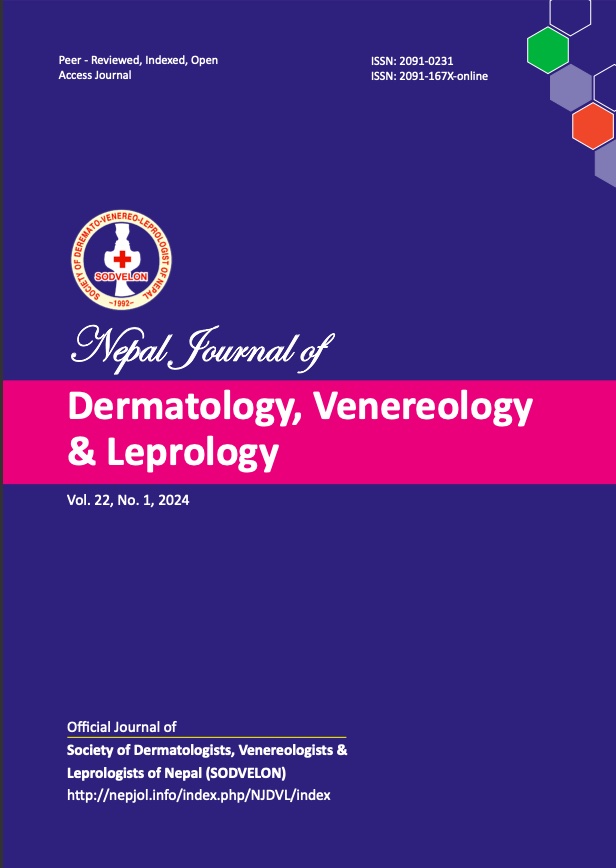Clinico-Histopathological Consistency in Dermatological Disorders in a Tertiary Care Hospital of Kathmandu
DOI:
https://doi.org/10.3126/njdvl.v22i1.63374Keywords:
Clinical Diagnosis, Clinico-Histopathological Consistency, Histopathological Diagnosis, Skin BiopsyAbstract
Introduction: A skin biopsy for histopathological examination is one of the most reliable investigations for confirming clinical diagnosis. When there is alignment of clinical and histopathological diagnosis, it demonstrates clinico-histopathological consistency. There is limited reported data on clinico-histopathological concordance in the context of Nepal.
Objectives: To determine the consistency of clinical and histopathological diagnosis of dermatological disorders.
Materials and Methods: A retrospective study was conducted on 551 patients who underwent skin biopsy at the Department of Dermatology and Venereology, Tribhuvan University Teaching Hospital, for a period of 1 year. Both inpatients and outpatients who had undergone a skin biopsy were included in the study. Demographic data, clinical and histopathological diagnoses were noted on a proforma sheet. Histopathological diagnoses, both definitive and descriptive, were deemed consistent when they aligned with the clinical diagnoses. Conversely, if either definitive or descriptive histopathological diagnoses were not concordant with the clinical diagnoses, they were categorized as inconsistent.
Results: The mean age of patients was 41.42 (±18.42) years. The male to female ratio was 1:1.5. Out of 551 cases who underwent skin biopsy, clinico-histopathological consistency was found in 64.43% of cases (355), whereas clinico-histopathological inconsistency was present in 35.57% (196). The maximum concordance was present in eczematous disorders (58.06%), followed by immunobullous disorders (47.22%), and vasculitis (45.45%).
Conclusion: The overall clinico-histopathological consistency was 64.43%. Both experienced dermatologists and pathologists need to assist each other in providing a better understanding of the diagnostic process. This study emphasizes need for this cooperation and will aid in evaluating clinico-histopathological consistency.
Downloads
Downloads
Published
How to Cite
Issue
Section
License
Copyright (c) 2024 Society of Dermatologists, Venereologists and Leprologists of Nepal

This work is licensed under a Creative Commons Attribution 4.0 International License.
Copyright on any research article is transferred in full to Nepal Journal of Dermatology, Venereology & Leprology upon publication. The copyright transfer includes the right to reproduce and distribute the article in any form of reproduction (printing, electronic media or any other form).




